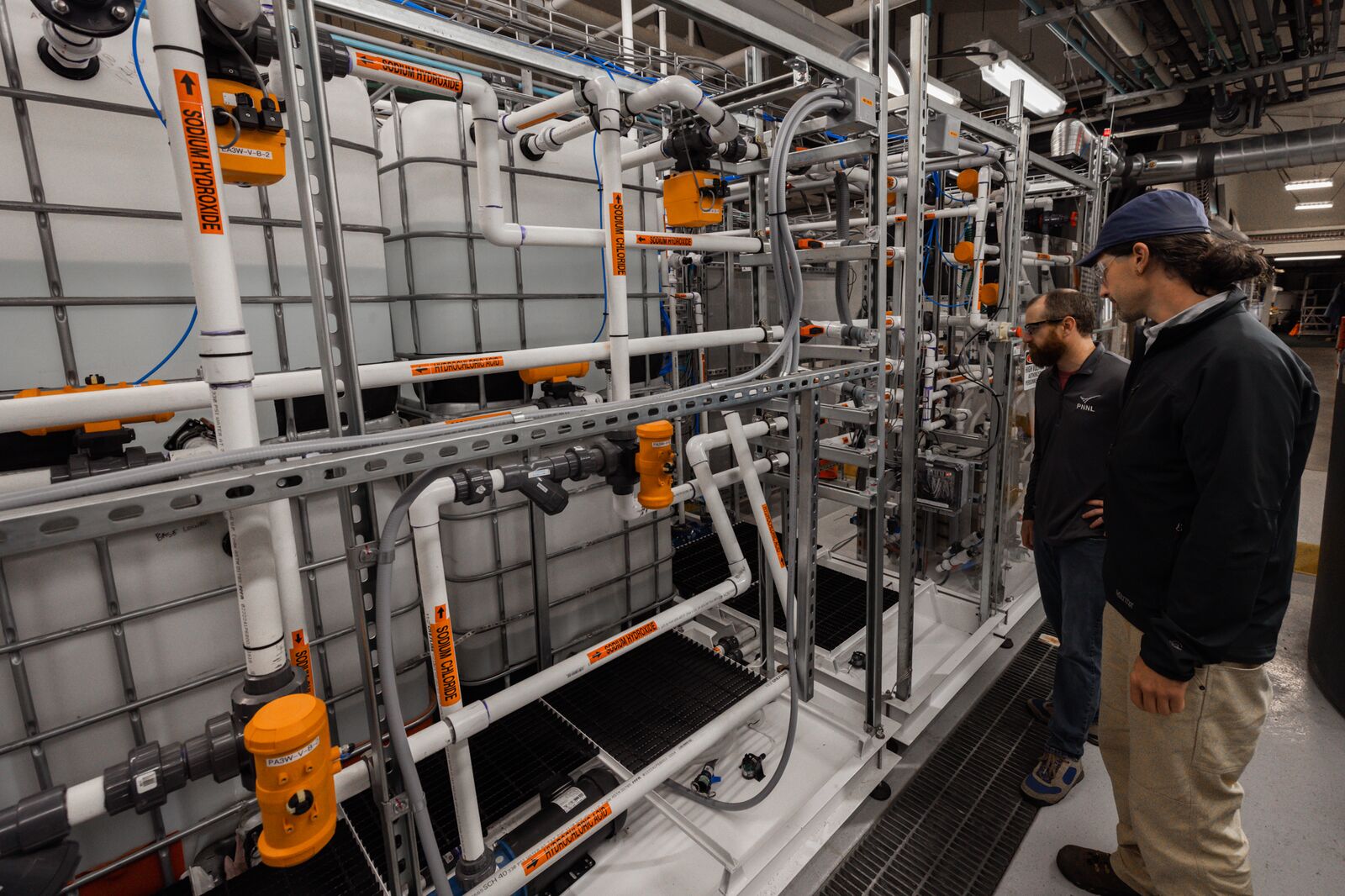mCDR Research at PNNL
PNNL has identified five research and development areas that are critical to advancing marine carbon dioxide removal (mCDR) science and technology:
1. Biogeochemical Modeling of mCDR
High-fidelity biogeochemical models are necessary to evaluate the feasibility, effectiveness, and safety of proposed marine carbon dioxide removal systems at local (10–100 m), regional (100–25,000 m), and global (25,000+ m) scales. Existing models provide some insight but require further development to accurately describe all the processes relevant to mCDR. New, comprehensive models can inform mCDR technology development, optimize effectiveness, and minimize unintended impacts on the marine ecosystem, while providing decision makers valuable information on the benefits and effects of mCDR solutions.
2. Accurate Monitoring, Reporting, and Verification of Carbon Dioxide Removal
Implementation of mCDR at a large scale will require unprecedented levels of environmental monitoring and ocean ecosystem observations to monitor and verify carbon dioxide storage and assess any environmental risks and benefits. This is possible with the development of new sensors and autonomous monitoring platforms that can accurately monitor carbon dioxide flux across large areas of the ocean for long periods of time. Research and development in this area will span platform and sensor development, data integration, adaptive sampling, biofouling mitigation, and energy generation at-sea using renewable energy.

3. Testing New mCDR Strategies
Collaborative, multidisciplinary research and development in both the laboratory and field are needed to evaluate new mCDR technologies. Approaches in mCDR fall into two main categories: biological approaches that increase ocean carbon dioxide storage through photosynthesis (e.g., kelp aquaculture) or chemical approaches (e.g., carbon dioxide stripping or increasing seawater alkalinity) that use the natural chemistry of seawater to hold more carbon. Significant research and development into new technologies in both of these areas are needed to realize their full potential.
4. Multisector Modeling of mCDR
The mCDR technology deployment in pursuit of net-zero emissions and beyond will entail interactions with global and regional energy, water and land systems, as well as ocean biogeochemistry. Yet existing models used to inform deep decarbonization strategies largely do not include mCDR and instead emphasize terrestrial carbon removal pathways. New coupled energy-land-water-climate models can inform mCDR deployment needs and potential, while informing ways to proactively mitigate negative side-effects.
5. Maintaining Existing Ocean Carbon Storage
Marine and coastal ecosystems already play a critical role in the global carbon cycle but are threatened by climate change and human activities. Nutrient pollution, seawater oxygen levels, and ocean acidification can have profound and sudden negative impacts on these habitats. To protect coastal habitats and their contribution to carbon dioxide removal, it is critical to identify mCDR solutions that support ecosystem resilience and support recovery of regions that have already experienced decline or collapse.